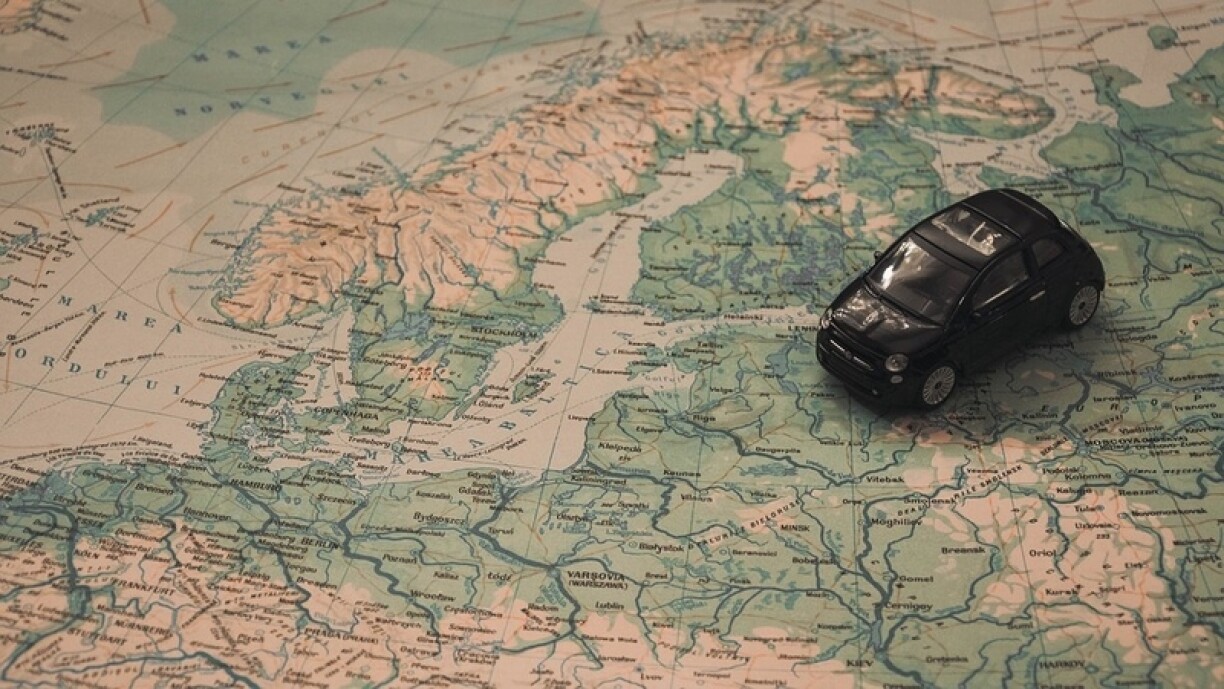
You can find the full data set and, by extension, the source for this article over at Eurostat - but we’ve gone through it to find the interesting bits, and how Luxembourg stands out! And once you’ve read this, try your hand at our quiz to see what you’ve learned!
Luxembourg saw 3,554,730 air passengers transported in 2017 - this makes up about 0.34% of the total number of passengers in the EU28. Curiously, 1,099 of these were ‘national transport’, indicating a domestic flight.. It’s unclear where they went to and from.
At 670 cars per 1000 inhabitants, Luxembourg has the highest number of cars per capita in the Union - we’re followed by Finland (617), Malta (613), Cyprus (609), and Poland (593). An EU28 average isn’t available as there was no data for Romania, but the average for the other 27 is 481, and the lowest number of cars per capita is Hungary at 355.
With that said, Luxembourg is close to the EU28 average when it comes to the division of transport between cars, buses, and trains. 83.1% of kilometres traveled are by personal car in Luxembourg, 12.3% by bus, and 4.6% by train. The EU28 average is 82.9%, 9.4%, and 7.7% respectively. This places us 10th in terms of the percentage of kilometres traveled by car, a list topped by Lithuania (89.9%), Portugal (89.1%), and the UK 85.6%). Austrians top the train-riding chart at 12.1%, followed by the Netherlands (11%), and France (9.7%).
Luxembourg is by far the most international country in Europe in terms of the percentage of the population that hails from somewhere else. Only 52.1% of the Grand Duchy’s population holds Luxembourgish nationality, compared to the EU average of 92.2%. We’re followed by Cyprus at 82.6%, and Austria at 84.2%. On the other end of the spectrum is Romania, where 99.4% are Romanian nationals.
We’re not at the top of the list if looking specifically at third-country nationals, however. Non-EU citizens make up 7.2% of Luxembourg’s population, with an EU28 average of 4.4% - this places us fourth, behind Latvia (13.8%), Estonia (13.5%), and Austria (7.8%). We do top the list when it comes to other EU citizens as a proportion of a country’s population, at 40.6% with an EU28 average of just 3.4%. Cyprus comes in second at 13.3%, followed by Ireland at 9%.
Luxembourg is also the country where EU immigration makes up the largest part of migration overall, at 68% - followed by Austria (58%), and Malta (54%). In the EU as a whole, only 30% of immigration is made up of members of another EU state.
The highest number of recipients of Luxembourgish nationality in 2017 came from Portugal (1325), followed by France (542), and the UK (377). By contrast, the top recipient countries for EU citizenship as a whole were Morocco, Albania, and India.
Luxembourg also granted 7207 residence permits, the top recipient nations of which were Syria (657), India (656), and the US (597). This is also according to 2017 data.
46.7% of tertiary (post-secondary) students in Luxembourg are from somewhere else, compared to the EU28 average of just 8.1%. We’re followed by Cyprus (23.1%), and Austria (17.2%).
In terms of our workforce, we have the 4th-highest proportion of other EU-citizens living in Luxembourg with a ‘high’ education level, at 46.1% - ahead of us are Denmark (54.2%), Sweden (53.4%), and Ireland 47.2%). Luxembourg nationals, by contrast, are more in line with the EU average: 28.9% have a low educational level, 42.8% medium,. and 28.3% high - the EU averages are 26.5%, 46%, and 27.5% respectively.
EU nationals make up a whopping 49.4% of the total number of employees in Luxembourg, and non-EU nationals make up 5%. In total, non-nationals make up 54.4% - the EU28 average is 4.1% of EU nationals, 4.2% for non-nationals, for a total of 8.3%. To put this further into perspective, Ireland comes 2nd in terms of the share of EU-nationals in the overall workforce - at a relatively meagre 12.8%!
The highest number of workers commuting from one country to another is from Poland to Germany, at 125,000. In second place, however, is French workers going to Luxembourg - 88,000. In third place is Germans coming to Luxembourg, at 52,000.
Only the sun-loving yet sun-deprived Swedes beat Luxembourg when it comes to the average expenditure per trip, with our Nordic friends spending some €779 on average. Luxembourg is second at €762, followed by Austria at €636. The EU28 average is 382.
We come fifth in terms of the number of people “pariticipating in tourism” - that is, the share of a population that went on at least one private trip in 2017. The Finns (91.3%) come out first, followed by the Dutch (85.5%), Swedes (81.9%), and Czechs (81.5), while 80.7% of Luxembourgers went on holiday in 2017.
We do tend to go for a bit longer than average when we head out, though - in fact, we spend the second-longest in the EU on an average private trip. Greece have us beat at 10 nights, while we clock in at 7.5 nights, followed by Belgium and the Netherlands at 6.7 nights each. Finns, while leading the charge in terms of the proportion of their population who go on private trips, have the third-shortest average at 3.5 nights (Estonia and Latvia are shared last at 3.3).
Unsurprisingly, Luxembourg is number 1 when it comes to the overall percentage of trips abroad - at 99%! Belgium is second at 79%, followed by Malta at 63%.